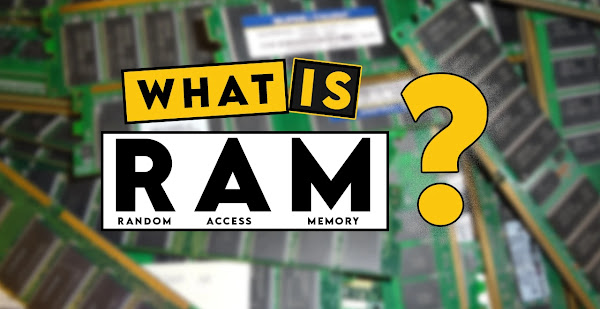RAM (Random Access Memory) is a type of computer memory that stores data temporarily for quick access by the processor. It is one of the most important components of a computer system, as it plays a crucial role in the overall performance of the device.
In this article, we will discuss the basics of RAM, its different types, and how it affects the performance of a computer.
What is RAM?
RAM is a type of volatile memory, which means that the data stored in it is lost when the power is turned off. The primary function of RAM is to hold programs and data that the CPU (Central Processing Unit) is currently working on. The CPU can access data stored in RAM much faster than it can access data stored on the hard drive, which is a type of non-volatile memory. This is because RAM is located closer to the CPU and provides faster data transfer rates.
Different Types of RAM:
DDR (Double Data Rate) RAM:
DDR RAM is a type of synchronous dynamic RAM (SDRAM) that transfers data on both the rising and falling edges of the clock cycle. This allows for twice the amount of data to be transferred compared to SDRAM. DDR RAM is available at different speeds, such as DDR, DDR2, DDR3, and DDR4.
SDRAM (Synchronous Dynamic RAM):
SDRAM is a type of RAM that is synchronized with the clock speed of the computer. It is available at different speeds, such as PC66, PC100, and PC133.
RDRAM (Rambus Dynamic RAM):
RDRAM is a type of RAM that uses high-speed bus technology developed by Rambus Inc. It was once popular, but its high cost and limited availability made it less popular than DDR RAM.
SRAM (Static RAM):
SRAM is a type of RAM that does not need to be refreshed like dynamic RAM. It is faster than dynamic RAM, but it is also more expensive and requires more power.
VRAM (Video RAM):
VRAM is a type of RAM that is specifically designed for use with graphics cards. It provides faster access to graphics data and allows for higher-resolution graphics.
How RAM Affects Performance
The amount of RAM in a computer system directly affects its performance. The more RAM a computer has, the more data it can store for quick access by the processor. This reduces the amount of time the processor has to wait for data to be retrieved from the hard drive, which improves the overall performance of the computer.
Additionally, having more RAM also allows the computer to run more programs simultaneously without slowing down. This is because each program requires a certain amount of RAM to run, and if the computer does not have enough RAM, it will start to use virtual memory, which is a type of memory that is stored on the hard drive. Virtual memory is much slower than RAM, and using it can significantly slow down the performance of a computer.
Errors with RAM
There are several errors that can occur with RAM in a computer system. Some of the most common include:
RAM Not Detected:
This error occurs when the computer is unable to detect the RAM installed in the system. This can be caused by a variety of reasons, including a faulty RAM module, an incorrect installation, or a problem with the memory controller.
RAM Failure:
This error occurs when one or more of the RAM modules in the computer system fails, causing the system to crash or produce errors. This can be caused by a variety of factors, including physical damage to the RAM module, a manufacturing defect, or exposure to extreme temperatures.
RAM Overheating:
This error occurs when the RAM modules in a computer system become overheated due to high usage or poor ventilation. Overheating can cause the RAM to become unstable, resulting in crashes and data corruption.
RAM Memory Leaks:
This error occurs when a program uses too much RAM, causing the available memory to become depleted. This can cause the computer to slow down or crash, as the operating system is unable to access the necessary memory to run programs.
Memory Management Errors:
This error occurs when the operating system is unable to manage the RAM effectively, resulting in performance issues and data corruption. This can be caused by problems with the memory manager or other system components, such as the hard drive or processor.
These are some of the most common errors that can occur with RAM in a computer system. If you suspect that your computer is experiencing any of these errors, it is important to seek help from a professional to diagnose and resolve the issue.
Conclusion
In conclusion, RAM is an important component of a computer system, as it provides the processor with quick access to the data it needs to perform its tasks. Different types of RAM are available, each with its own advantages and disadvantages. The amount of RAM in a computer system directly affects its performance, and having more RAM allows the computer to run more programs simultaneously without slowing down.

